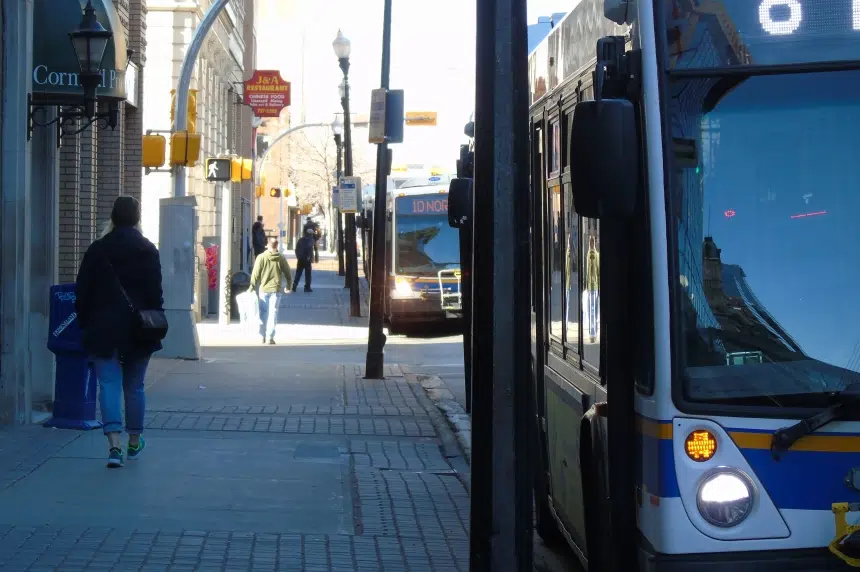Nearly every industry has taken a hit from the COVID-19 pandemic in one way or another, and public services are no exception.
With universities closed to in-class learning and far fewer people physically going to work in the downtowns, transit services in Regina and Saskatoon saw a massive drop in ridership and therefore revenue.
“What we ended up seeing right off the bat was a complete collapse. So when the university stopped (in-person) classes, when people stopped going to work in the downtown core, we saw an immediate collapse of that 6 (a.m.) to 9 (a.m.) morning peak,” explained Jim McDonald, director of transit for the City of Saskatoon.
Right off the bat last spring, Regina Transit changed services, according to Brad Bells, director of transit and fleet services at the City of Regina. He said the city moved to a 60 per cent model to control the ridership that was dropping so quickly, reducing routes that went to the university and high schools because students weren’t going in to class anymore.
For the first while, neither Regina nor Saskatoon transit charged fares.
“We went for almost three full months without any fares being charged. That took a real hit to our revenue budget,” McDonald said.
Bells said ridership dropped at least 50 per cent in that time.
“Even waiving the fee didn’t increase ridership at all, so there were lots of people not using transit at that time,” said Bells.
Even now, more than a year into the pandemic, ridership in both cities is sticking around a third of what it was in 2019.
In Regina, services are back to about 85 per cent of normal, but while almost 26,000 people rode the bus a day during normal times, it’s only at about 8,000.
Revenues for Regina Transit were cut nearly in half in 2020, between the loss of ridership, three months of not taking fares, and the cancellation of the university’s U-Pass program while classes are taught online.
There were also extra costs to deal with including personal protective equipment for the buses, vinyl screens to protect drivers and the cost of using a disinfectant fog on the buses every night. Bells said those costs would be around $500,000 to $1,000,000.
There were also some savings around reduced services and requiring less overtime, but also because fuel costs were lower than anticipated.
“We had a slight savings but it definitely didn’t meet the loss in revenue that we also experienced,” said Bells.
In Saskatoon, revenue was down almost $5 million for the year, but Saskatoon Transit was also able to achieve some savings when it came to bus maintenance and fuel costs, so it ended the year at a $1.8-million deficit.
In August, Saskatoon and Regina’s transit offices started a pilot for an on-demand bus services where someone can book a trip instead of waiting at a stop for a pre-planned route.
“It was planned on before the pandemic hit … but now we’re seeing that is a good pilot to do for the pandemic,” said Bells.
There’s no clear plan as to when either service expects to get back to normal.
Bells said there’s no timeline but Regina Transit is watching information from the health authority, university and high schools.
“We don’t know when we’re going to be back, but I think once everybody can get vaccinated and we get back to normal (transit) will follow suit as well,’ said Bells.
They’re a little less optimistic in Saskatoon.
McDonald said the entire industry is trying to figure out what transit post-COVID is going to look like.
“The industry across the board is not looking at a return to 100 per cent of our ridership for a number of years. I would see we’re probably on a three- or four-year move to getting back to near normal. And that’s a pessimistic view, but I think it’s an appropriate view,” said McDonald.











